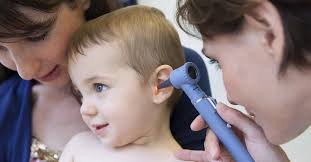
Ear Infections in Children: What Parents Need to Know
Ear infections are a common concern for parents of young children. While they can be a source of discomfort and worry, understanding their causes, symptoms, and what actions to take can help you care for your child with confidence. This article dives into the basics of ear infections, symptoms to watch for, practical remedies, and when to seek professional care.
Understanding Ear Infections
An ear infection occurs when the middle ear, located just behind the eardrum, becomes inflamed or infected. This often happens due to a buildup of fluid caused by bacteria or viruses. Since children’s ear structures are smaller and less developed than adults’, they’re more prone to infections, particularly after colds or sinus congestion.
Common Symptoms of Ear Infections
Children may not always be able to explain how they feel. Recognizing the signs of an ear infection is a key step in managing infections. Some common symptoms include:
- Ear pain: This might be evident if your child pulls or tugs at their ear.
- Difficulty sleeping: Pain may intensify when lying down.
- Loss of appetite: Swallowing can increase ear pain, making eating uncomfortable.
- Fever: A mild to moderate fever can accompany an infection.
- Fluid drainage: Yellow or white fluid coming from the ear could indicate a ruptured eardrum.
- Difficulty hearing: Temporary hearing issues may occur due to fluid buildup.
If your child is too young to express discomfort, look for changes in behavior, irritability, and a general change in mood.
What Parents Need to Know
While ear infections can be concerning, they’re also quite common, especially in young children between the ages of 6 months and 2 years. Most mild infections clear up on their own within a few days, but repeated infections over time can signal the need for further evaluation. Pay attention to whether your child’s infections are isolated incidents or recurring. If they happen frequently or seem linked to specific events, discussing these patterns with a healthcare provider can help address underlying causes.
Home Remedies to Support Your Child’s Comfort
If your child is experiencing mild symptoms of an ear infection, there are a few at-home steps you can take to provide some relief:
- Use a warm compress: Place a warm, damp cloth over the affected ear for 10-15 minutes to alleviate discomfort.
- Offer plenty of fluids: Swallowing helps drain the middle ear, so encourage drinking water, juice, or other hydrating fluids.
- Administer over-the-counter pain relief (as directed): Medications like ibuprofen or acetaminophen, suitable for your child’s age and weight, can ease pain and reduce fever.
Avoid using cotton swabs in your child’s ears or putting any liquids into the ear unless specifically directed by a healthcare provider.
When to Seek Medical Attention
While many infections resolve on their own, there are times when a visit to a healthcare provider is necessary. You should make an appointment if symptoms last longer than 2-3 days, worsen over time. If your child experiences severe pain or a high fever above 102°F are signs it’s time to see a doctor. Additionally, fluid or pus draining from the ear or recurrent infections with noticeable hearing issues mean medical attention is needed.
Prompt treatment for persistent or severe infections can help prevent complications and make sure your child stays healthy and comfortable. Urgent care clinics offer convenient and timely medical attention for these types of infections. They are especially helpful when you need care outside regular office hours or can’t get a same-day appointment with your primary provider.
Prioritizing Ear Health
While ear infections can be uncomfortable for children and concerning for parents, there are steps you can take to manage the situation effectively. Start by recognizing the symptoms, providing comfort with simple remedies, and knowing when it’s time to consult a healthcare provider. With the right care and attention, your child will be back to their cheerful self in no time.
